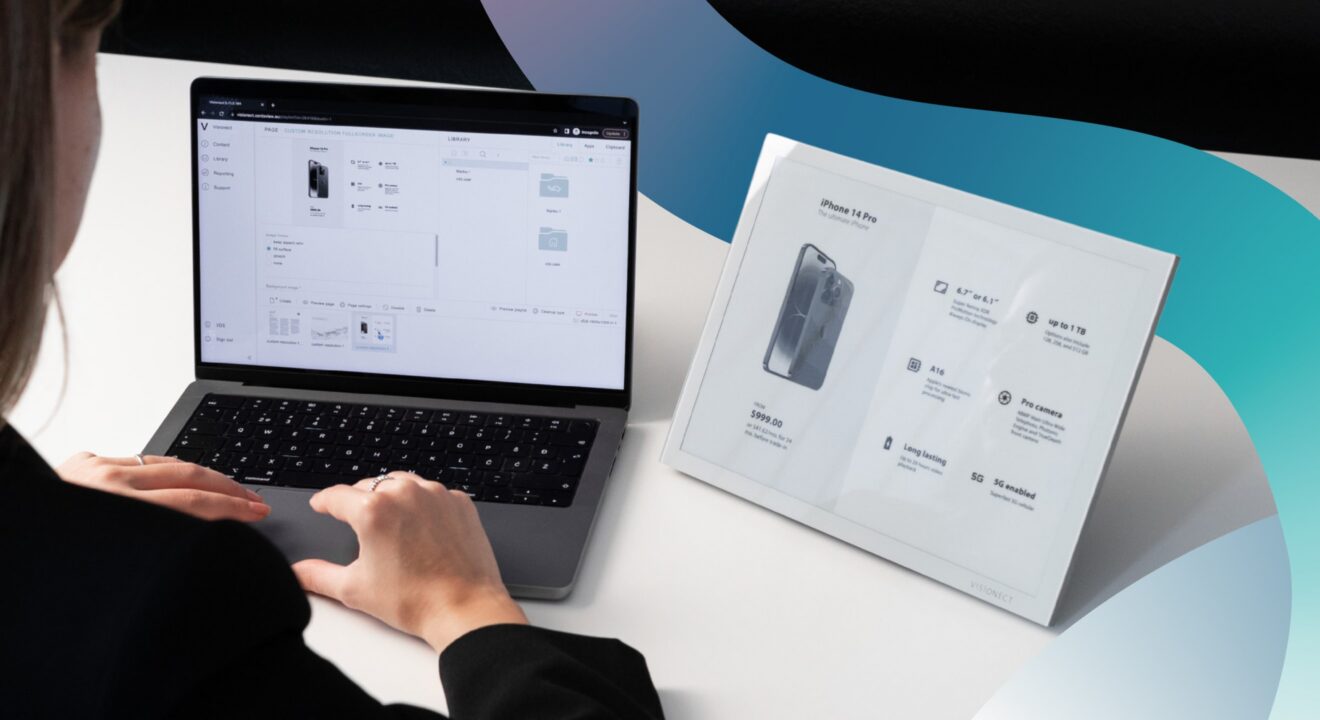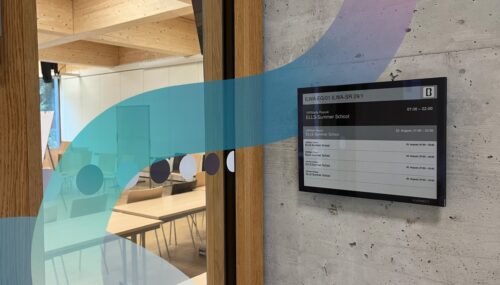

Best digital signage CMS platforms
Visionect, 30 Sep 2025
Why the CMS Matters in Digital Signage
When you think of digital signage, the first thing you notice is the screen — a lobby TV, a restaurant menu board, or a sleek e-paper display outside a meeting room. But the real power comes from the Content Management System (CMS), which controls what content appears, when it appears, and how easily your team can update it without IT support.
For offices, museums, schools, and hospitality venues, choosing the right digital signage CMS is about more than features. It’s about reducing costs, saving energy, simplifying setup, and keeping content fresh across all screens with minimal effort.
What to Look for in a Digital Signage CMS
The best digital signage CMS platforms combine
- Flexibility,
- Simplicity, and
- Efficiency
Cloud-based systems let teams update content from anywhere, while playlists and scheduling rules ensure the right message appears at the right time. Many also include easy-to-use templates and design tools, making it simple to create polished screens — whether you’re using LCD, LED, or low-power e-paper displays.
Increasingly, another factor is becoming important: sustainability and power usage. Traditional LCD screens require constant power and sometimes costly cabling, while the latest e-paper displays paired with specialized CMS platforms offer months of battery life and much lower operating costs.
Comparing the Leading CMS Platforms (2025)
Here are some of the most widely used CMS platforms for small networks today, alongside their pros and cons.
Appspace
Best for: Enterprise workplaces and global organizations needing unified communication tools
Highlights:
- Combines digital signage with room booking, intranet, and employee communication features
- Supports a wide range of hardware, including SoC displays and media players
- User-friendly interface for content scheduling, templates, and channels
- Integrates with Microsoft Teams, Google, and workplace collaboration tools
Cons:
- Enterprise focus may be overbuilt for small networks
- Pricing is custom and requires consultation
Scala (by Stratacache)
Best for: Retail, hospitality, and multi-location networks
Highlights:
- Long-standing CMS used by global brands
- Powerful content design tools and dynamic template options
- Reliable playback engine with flexible scheduling and targeting
- Scales from single-site deployments to thousands of screens
Cons:
- Interface can feel dated compared to newer cloud platforms
- Complex deployments may need IT involvement or professional setup
Poppulo (formerly Four Winds Interactive)
Best for: Large enterprises and institutions focused on internal communications
Highlights:
- Integrates digital signage with employee engagement and intranet tools
- Strong governance, approval workflows, and role-based access
- Supports enterprise analytics and multi-location content management
- Ideal for corporate offices, campuses, and global organizations
Cons:
- Enterprise pricing model with custom onboarding
- Broader communication tools may be unnecessary for signage-only projects
Broadsign
Best for: Digital-out-of-home (DOOH) networks and ad-based signage
Highlights:
- Used by major media and advertising operators worldwide
- Automates scheduling and campaign management at large scale
- Includes analytics, proof-of-play, and monitoring tools
- Offers programmatic ad integration and flexible playback management
Cons:
- Primarily designed for advertising networks, not general internal signage
- Complex campaign setup may be more than smaller teams need
Visionect Place & Play
Best for: Offices, museums, schools, and hospitality needing sustainable, subtle, cable-free signage
Highlights:
- Compatible with e-paper displays (6″, 13″, 32″) with up to 12 months battery life
- All-in-one solution for LCD, LED, and e-paper displays for easy management
- Web-based CMS with scheduling, playlists, remote updates
- Sleek, cable-free design ideal for refined environments
Cons:
- Static or semi-static content only (no video)
- Higher upfront cost compared to traditional screens
Why an e-paper compatible CMS is the future
Traditional digital signage CMS platforms are built for LCD and LED screens, where video, animations, and constant updates are the focus. But when it comes to offices, museums, education, hospitality, and other use cases worldwide, an e-paper–compatible CMS offers unique advantages:
- Tailored for e-paper. Updates are lightweight, battery-friendly, and optimized for static or semi-static content like schedules, menus, and wayfinding.
- Lower long-term costs. With no wiring, minimal electricity usage, and fewer IT demands, the total cost of ownership is lower than traditional signage setups.
- Subtle and distraction-free. Instead of pushing flashy templates or constant media, an e-paper CMS emphasizes clean scheduling and content that blends into professional or elegant environments.
- Scales without overhead. Because devices are wireless and battery-powered, expanding from a few displays to a full building or campus requires little additional infrastructure.
- Sustainability built-in. Every feature is designed to prolong device life and minimize energy use, making it an ideal fit for organizations with ESG or green initiatives.
For businesses and institutions that want signage to be efficient, unobtrusive, and environmentally responsible, an e-paper–optimized CMS is the clear step forward.
Cloud vs. on-premise CMS: A quick note
For most venues — including offices, museums, education, and hospitality — a cloud-based CMS is almost always the better choice. This setup avoids the IT overhead of running servers on-premises, allows remote updates from anywhere, and makes scaling much easier. On-premises is still favored in some highly secure enterprise settings, but for most small to mid-sized networks, the cloud wins on cost and convenience.
Conclusion: The Future of Digital Signage
Mainstream CMS platforms like ScreenCloud, Yodeck, OptiSigns, TelemetryTV, OnSign TV, and NoviSign remain solid choices for general-purpose digital signage. However, CMS solutions optimized for e-paper and low-power displays are changing the game. They combine sustainable, cable-free operation with easy deployment and versatile compatibility, making them ideal for offices, museums, educational institutions, hospitality venues, and more.
For organizations that value energy efficiency, minimal maintenance, and refined aesthetics, adopting a CMS that supports e-paper and other low-power displays ensures communication is effective, environmentally friendly, and elegantly integrated into any space.
Ready to simplify your digital signage management? Contact our team today.
Frequently asked questions about digital dignage CMS
A digital signage Content Management System (CMS) is the software that controls what appears on your screens, when it plays, and how easily it can be updated.
Instead of managing each screen manually, a CMS lets you schedule, automate, and refresh content across your entire network.
For many venues, cloud-based CMS platforms are the best choice. They allow remote updates, reduce IT overhead, and make scaling simple. On-premises systems are usually only necessary in highly secure or specialized enterprise settings.
Traditional CMS tools are built for LCD or LED screens that run video or animations. An e-paper CMS is designed for low-power displays that show static or semi-static content like schedules, directories, or menus. This configuration makes them energy-efficient, cable-free, and perfect for environments that value sustainability and subtle design.
If you want signage that is sustainable, low-maintenance, and seamlessly fits into professional spaces, e-paper displays with a dedicated CMS are an excellent choice. They minimize energy use, cut wiring costs, and provide a distraction-free way to keep communication fresh.
Tags

